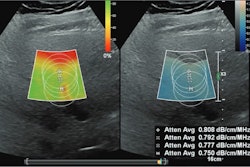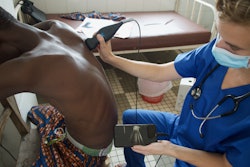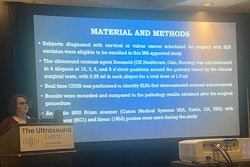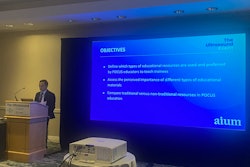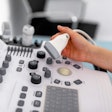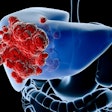Dear AuntMinnie Member,
Researchers continue to find ways to incorporate ultrasound into examinations as an alternative to more invasive testing. They believe that the modality can help patients avoid unnecessary and time-consuming methods such as biopsy.
One team in China is experimenting with how to combine ultrasound and clinical features to create a risk stratification model that can help better detect endometrial malignancies. The team’s study highlighted that women who were positive for malignancy tended to have higher endometrial thickness. See what else the team found in this edition’s featured story.
Also, the American Institute of Ultrasound in Medicine (AIUM) in March held its annual conference in Orlando, FL. The conference featured some of the latest research and insights from professionals in various medical specialties. Check out what AuntMinnie covered, including the following stories:
- Ali Rezai, MD, presented on the promise that therapeutic ultrasound has in treating neurological diseases like Alzheimer’s and Parkinson’s.
- Leroy Chiao, PhD, and Scott Dulchavsky, MD, PhD, discussed their experiences in space, including how ultrasound plays a key role in assessing the health of astronauts.
- A study presented at the conference showed how lymphosonography can detect sentinel lymph nodes in cervical and vulvar cancer patients scheduled for surgery.
- A 3D-printed simulation model could help improve ultrasound-guided anesthesia skills for practitioners.
- Educators teaching point-of-care ultrasound (POCUS) are using more nontraditional education resources to train their students.
Speaking of POCUS, researchers continue to find ways the technology can be used in areas where access to healthcare can be challenging. Véronique Suttels, PhD, from Lausanne University Hospital in Switzerland presented research at the European Society of Clinical Microbiology and Infectious Diseases (ESCMID) conference in Vienna, Austria. She discussed her team’s results regarding the use of AI-guided POCUS for detecting tuberculosis at a rural hospital in West Africa.
Another AI study out of King’s College in London, England, found that AI could help sonographers find fetal abnormalities faster without sacrificing diagnostic quality.
In other news, research led by Richard Barr, MD, PhD, from Northeastern Ohio Medical University in Youngstown found that attenuation coefficient measurements from ultrasound can help better detect hepatic steatosis and address interoperator agreement.
Finally, AuntMinnie spoke with a co-founder of the Pennsylvania Association for Sonographers, which formed in February 2025. The association is trying to support sonographers in the Keystone State and surrounding areas through accessible resources, networking opportunities, education, and careers.
Be sure to regularly check out our Ultrasound content area for the latest news in the modality. And please drop us a line if any new updates catch your eye that you think should be in our view, too.
Amerigo Allegretto
Associate Editor
AuntMinnie.com





